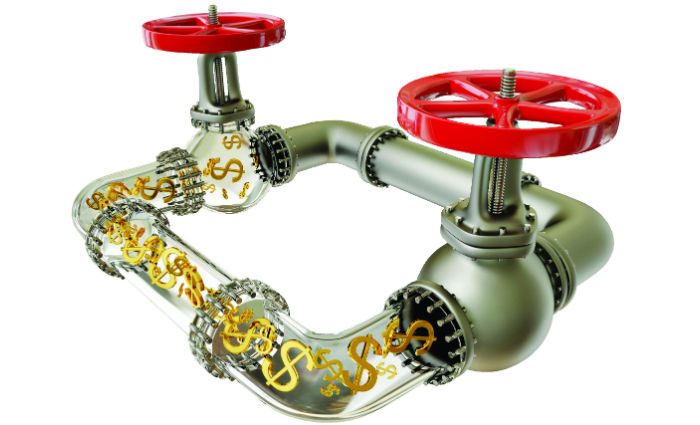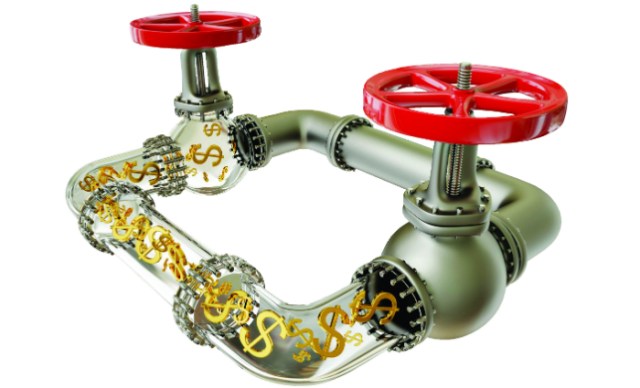
Cashflow is the lifeblood of every industry but in the printing world it is taking a hit. Late payers are multiplying and terms of trade are being stretched toward breaking point.
The problem is spread right across business, not just printers. According to Dun & Bradstreet’s latest analysis, fewer than half (46 per cent) are paying accounts within the standard 30 day period. Accounts are now being settled at an average of 53 days, nearly two months on. Extraordinarily, this is happening when interest rates are at a record low.
Colin Porter, managing director of Creditor Watch, says printers are particularly vulnerable in an industry where revenues are under pressure. The industry, he says, also has particular quirks that make it more susceptible to cashflow problems.
[Related: More credit and debt news]
In tough times, there is a lot that could give a printer serious cashflow problems.
“You have companies who are desperate to sell equipment so they will provide easier payment terms and give flexible arrangements to try and get printers to take new machinery,’’ Porter says.
“The equipment is changing so fast, a machine might be economical today but next year there is a brand new press out which is quicker, faster and more economical, so you are no longer competitive.”
“And there lies the problem. The printer is left with a piece of expensive equipment they got on good terms that is now outdated and not making the business enough money. They will make a loss if they sell the equipment.”
The other problem, says Porter, are the paper merchants.
“With a lot of advertising going online, printed products are reducing so there is less paper being purchased,’’ he says.
“Paper companies still have to make their revenue targets so they may start offering extended terms to printers. When they do that, the printer’s cashflow is eased but within a short period of time they have used up that gap in cashflow, so they are in that situation where they used to buy paper on 45 days, now they get it for 90 days and there is no more room to move.”
Factoring
A growing number of printers are turning to factoring, otherwise known as invoice discounting and debtor finance. Cutting through the jargon, it works through a simple model: essentially, a printer sells its invoices to debtor finance specialists, usually linked to the banks.
Let us say, for example, a printer does a $100,000 job and sells the invoice to the specialist. The specialist will check the credit-worthiness of customer and printer. If everything checks out, they will buy that invoice for around 80 per cent of the value, or in this case, $80,000, and take it upon themselves to retrieve the money.
After 60 days, the customer pays the bill in full. The money goes straight to the specialist. They take a certain amount from the printer as their cut, which may be as low as one per cent and the rest goes back to the printer. If the customer does not pay the risk is with the factoring house, the printer still gets to keep his $80,000.
It is a growing trend. According to the Debtor and Invoice Finance Association of Australia and New Zealand, factoring has increased by more than 60 per cent over the last four years, fuelled by the rise of non-bank financiers. More businesses are now using it to chase debtors.
It is easy to understand why this is happening. It is a system that frees up cashflow, quickly. The printer gets the invoice paid within 24 to 48 hours. That gives them the cash to pay wages, suppliers and other pressing bills. Factoring, discount invoicing and debtor finance ensures bills are paid quickly.
It is also a good way for the printer to put pressure on slow-paying clients. The printer tells debtors that if they do not pay within the nominated time, they are reported to the bank which affects their credit rating.
There is however a downside – the printer is giving away margin. In some industries, 1-1.5 per cent does not constitute a huge slice of the total profit. But on a print job, with small margins, it might be a big cut. Not only that, the printer has to provide the invoices every month. Multiply 1-1.5 per cent by 12 and it starts to blow out. That could be a problem for a printer unless there is enough cash coming in to offset that. It really depends on the job.
But because it eats into margins, the growth of factoring will put more pressure on the profitability of the industry.
Overdraft
Another option to assist cashflow is to take an overdraft, usually around February when business is slower. With most overdrafts, the banks require property as security.
An overdraft is a completely different proposition. With discount invoices, the invoice itself is the security. An overdraft tends to be a fixed amount linked to the value of the printer’s house which is put up a security. With invoice discounting, the loan is linked to the value of the business.
Porter says the factoring industry has targeted printers.
“Factoring companies see printers as good targets,’’ he says. “There is some advantage in using factoring companies in that they can actually manage some of your receivables. Instead of you calling up your customers asking for the money, that is a service they can provide.
“When you are dealing with someone who is not connected to the customer, you can generally get paid a little bit quicker and be more focused on it.”
On the other hand, he says it could be a risky strategy for the printer. “One of the problems for a printing company if you are going down the factoring route is that once you start, it can be hard to get out of. You are paying a high interest rate for a product that is hard to get out of.”
Still, as he says, “Some printers may not have a choice. Sometimes printers do not have the luxury to choose. When you are struggling with cashflow, where do you go?”
He says the big risk many printers have is when they work to one major client. When they lose that, or when the client folds, they are in trouble. “In any business, you would want to have the right balance of corporates and small businesses in different sectors, so there is a good cross section,” he says.
He says the desperate printers are the ones who take on clients that might have a bad credit history or are complete unknowns. What they need to do, instead, is conduct a due diligence on every client to ascertain their creditworthiness.
He says that Australian businesses have to get used to doing due diligence. Traditionally, it has not been a strength of any Australian business.
“Across the board, Australian businesses have never been used to doing credit checks because they have always been too expensive and it is not something they are educated about,” he says.
Certainly more companies are taking printing industry cashflows into account. Jonathan Perry, marketing and business development manager at Canon, says Canon structures its leasing arrangements around high and low cashflow cycles when it is leasing out equipment.
Tim Gullifer, a Deloitte Private partner, says factoring, or debtor finance is ‘last resort’ borrowing because the printer is giving away margin. But the plus side, he says, is that it imposes a culture of more rigorous monitoring of cashflow and debtors.
“It forces small businesses to keep good control over their debtor ledger,’’ Gullifer says. “You run your debtors report every two weeks, send it across to the bank, they look at it, they might say we will lend you 80 per cent of everything under 30 days. You are giving away margin but you are accelerating your collection. You hand over your invoice run and they will advance a certain sum.”
He says the industry has to take to new methods of chasing cash at a time when many companies are feeling the burn.
“They have to look at different ways of conducting their business. If they are going to stay in the original print media, that is an expensive exercise because you have to buy all that expensive hardware, so in doing that, managing your cashflow means collecting your debts faster and then it comes down to competing with other players on price.
“You then have to try and attract more business to increase your cashflow.
“It comes down to what I call the four blood lines on the printer’s balance sheet which is cash, debtors, creditors and the plant and equipment which produces the end result.”
In the final analysis, it really depends on the state of the business. When a company is profitable and growing, it can use invoice discounting to support its cashflow. A smart company will offset the cost of invoice discounting by obtaining a settlement discount with its suppliers.
But, as Gullifer says, it is a different story for businesses that are not growing. “In a business growing quickly, they can get their cashflow in quickly. If the business is declining, it will be a struggle,” he says.
Cashflow analysis checklist
Profit is what the accountants tell you that you need, but cash is king. Sales contribute to an accounting profit but the cashflow tells the real story. Payment from that sale, for example, might be deferred as a result of giving credit to the customer.
At the same time, you have to pay suppliers and staff. You might also have to invest in rebuilding depleted stocks and buying new equipment.
If cash receipts lag cash payments, the business suffers a short term cash shortfall. In the worst case, it could be making a profit and going broke.
Cashflow analysis is not like the standard profit and loss table. It takes in many more variables such as accounts payable, receivables, costs, inventory and work in progress.
- Create a cashflow forecast, to map out for you who you are paying, when the payments are due, who is paying you and when that is coming in. The forecast also sets out all your costs for the month. A good forecast model can anticipate problems so you can take action to avoid them. It can be used to develop assumptions on sales, costs, credit and funding to produce monthly cashflow projections well ahead and assess the impact of cashflow on future sales,costs and credit terms and replacement of assets, such as office equipment and cars
- Invoice more frequently, rather than doing what so many small businesses do and leaving it to the end of the month. If you have $40,000 a week coming in and you leave it for two weeks, that is $80,000 less to work with. Invoice as soon as the job is done
- Ask for payment up front. Depending on the relationship with customers, the strength of the business and the particular job, it might pay to collect a good amount up front before the job begins. Some businesses, for example, might settle for 40 per cent up front and payment on job completion
- Triage payments are done frequently in the construction industry where payments are staggered across the process. The first payment comes when stage one is completed, the next when the second is done and it proceeds through various agreed payment points
- Provide discounts on early payments; some companies offer incentives like 2.5 per cent off the price. Some offer discounts for payment in advance
- Avoid cash. Many small business owners carry cash. This is best avoided as the folding stuff has a tendency to slip through the fingers. As soon as the cash comes in, it is best to bank it. Ensure that all payables are done electronically. Whenever possible, use a business credit card for travel, meals and minor expenses. This leaves more cash in your hands and defers payment
- Manage your receivables carefully. Create a schedule of what is owed and stick to it. Call in overdue accounts and make sure you understand the debt recovery procedure. Debt collection agencies can provide a pro forma letter for late payers. Also, you might consider adding a late payment fee for the recalcitrant
- Monitor costs and inventory. Remember that inventory consumes cash. You have to purchase before you can sell it and regardless of whether or not you sell it, your vendors will want to be paid. Every dollar you spend on inventory is a dollar less cash you have to use
- Stay on good terms with your bank. If you know you are in for a short term cash shortfall, make sure you have a plan and keep the bank in the loop
- Time your payables. Negotiate terms with suppliers to stretch these out as long as possible. By doing that, you are creating an interest free line of credit. At the same time, however, do not do this at the expense of a solid relationship with suppliers. You need to work with them and you need them there to help through the tough times
Such are the rules for cashflow. They will vary from business to business but generally, most companies adhere to these or variations of them. Cashflow makes the difference between a good and bad business, between sustainable or not.
Comment below to have your say on this story.
If you have a news story or tip-off, get in touch at editorial@sprinter.com.au.
Sign up to the Sprinter newsletter


